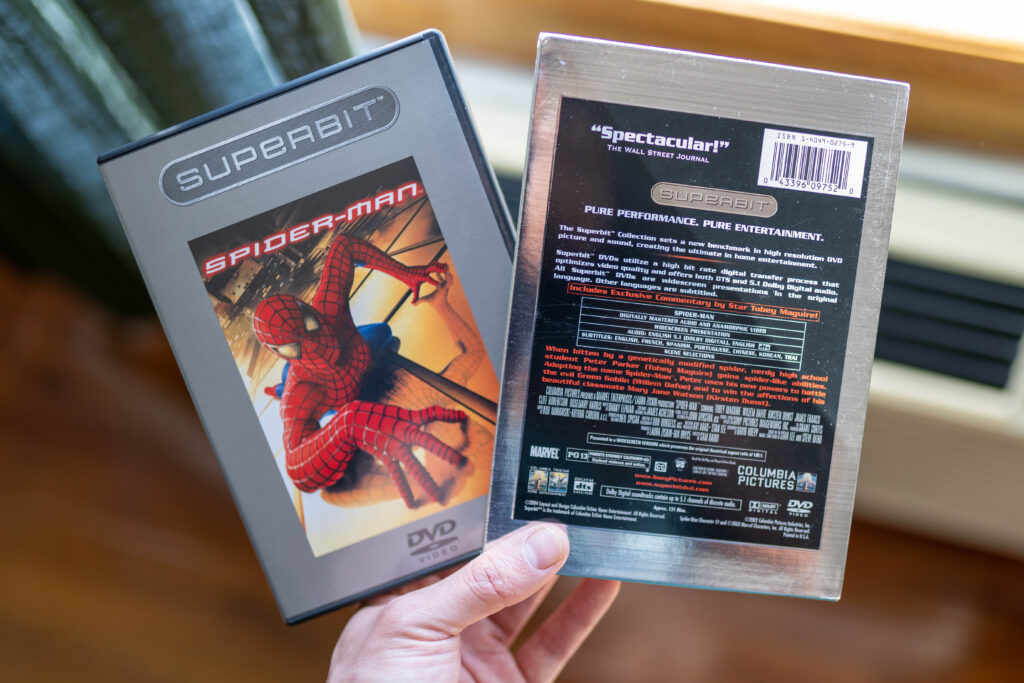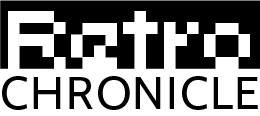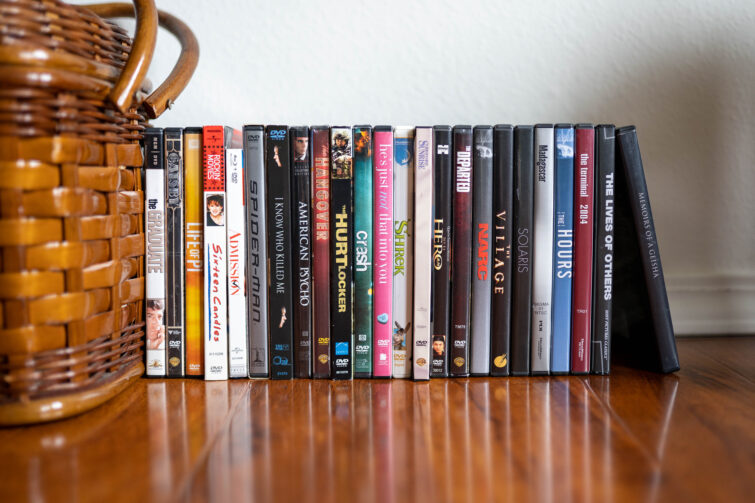This is part two of a 12-part series on my experience re-building my physical film collection in response to streaming fatigue. I’m giving myself a $30/month budget for curating a new personal movie collection from thrift stores. Read the introductory post and follow along here on Retro Chronicle.
***
I concluded the last post in this series by positing an abbreviated piece of my philosophy on collecting: The more niche a collection becomes, the more interesting and discerning it is. In exploring this idea, I continued reflecting on a few questions: What kind of physical movie editions sparks my interests? And what parts of cinema history do I find curious or worthy of preservation? This month’s finds provided some insights.
Moving into month two, I wanted to explore some more thrift shops in my area but struggled to find the time. I assumed that fiscal budgeting would pose some of the biggest challenges, but time budgeting is proving just as tricky. Of course, the two are linked by a trade-off: The better deals will come with longer searches. But turning the hunt for gems on DVD into a chore would defeat the purpose of an experiment built on fun. It’s a rocky balance. At the end of the month (May), I had visited my favorite local thrift store twice, another thrift store in my area once, and made one online purchase to round off the month, adding 24 titles the collection for $29.58— bringing the total collection count to 40 films.
Local Thrift Store: “The Graduate,” “The Great Gatsby,” “Life of Pi,” “Sixteen Candles,” and “Admission” ($1.00)
I’m still in disbelief that my closest local thrift store sells DVDs and Blu-ray for 20 cents each. This deal enabled me to take home 15 movies for one tenth of my monthly budget, with my first trip netting me 5 movies. I’ve only seen “The Graduate” once (and the ending scene several times more), and I’m looking forward to a re-watch. “The Great Gatsby” was primarily for my partner, as I find both the film and book to be too boring (although I appreciate Lana Del Rey’s contribution to the soundtrack). I’ve never seen “Life of Pi,” but I intend to watch every movie Ang Lee has ever made.
“Sixteen Candles” is a classic, and this particular edition was released under the “Rockin’ Movies” branding, which is a line of DVD releases that included a download code for MP3 music related to the corresponding film. Besides “Sixteen Candles,” “Hot Fuzz,” “Weird Science,” “Dazed and Confused,” “American Pie,” and “The Breakfast Club” also received such editions. I’ll absolutely keep an eye out for more of these editions in the future, because it was fun to see these creative branding efforts (even if the download codes are long expired). Like with “The Strangers: Prey At Night” last month, “Admission” was a movie that I picked up mainly due to mild curiosity and low price point.
After this batch of acquisitions, I’ve also started my own director collections for both Ang Lee and John Hughes.
Local Thrift Store: “Spider-Man” ($2.00)
Did you know that before Blu-ray was introduced, home entertainment companies experimented with premium DVDs that aimed to improve both picture and audio quality of standard DVDs? One such experiments was the Superbit line of DVDs, which launched in 2001 with five titles: “The Fifth Element,” “Crouching Tiger, Hidden Dragon,” “Air Force One,” “Desperado,” and “Johnny Mnemonic.” These were released by Sony Pictures Entertainment and featured increased bit rate of encoded video and Dolby Digital and DTS 5.1 surround audio tracks.

This month, I visited another local thrift store in the nearby neighborhood of Eagle Rock in Los Angeles. This store sells DVDs for $2 and Blu-ray for $4, but collection is much more organized and easy to sift through. Most Superbit DVDs do not include slipcover so this one caught my eye pretty quickly. “Spider-Man” and its next sequel are the two most common Superbit DVDs. About 50 Superbit DVDs were released in the U.S. And while I do not intend to complete the collection, I find the history of attempted DVD upgrades to be fascinating and will likely try to expand my Superbit collection, albeit at a lower priority.
Local Thrift Store: “I Know Who Killed Me,” “American Psycho,” “The Hangover,” “The Hurt Locker,” “Crash,” “He’s Just Not That Into You,” “Shrek,” “Before Sunset,” “Hero,” and “The Departed” ($2.00)
A few weeks after my $1.00 score at my closest thrift store, I returned with my partner to scoop up 10 more DVDs. Since this thrift store kept a rather chaotic stack of movies near a busy cashier, having a partner to assist with checking discs for scratches made the process much less stressful. I picked up “I Know Who Killed Me” and “He’s Just Not That Into You” for my partner. “American Psycho,” “The Hangover,” “Shrek,” “Before Sunset,” “Hero,” and “The Departed” are all welcome additions that I’ve already seen. “Before Sunset” is one of my favorite films, so I was happy to add this one even though I already own the “Before” trilogy on Criterion Blu-ray. I’ve never seen “The Hurt Locker” or “Crash,” so I’m happy to pick those up.
“I Know Who Killed Me,” “American Psycho,” and “The Hangover” are sealed, so I may keep those separated for potential trade. With last month’s addition of “Century of Cinema: A Personal Journey with Martin Scorsese Through American Movies,” “The Departed” will help kickstart a Scorsese collection, and the addition of “Before Sunset” will likewise start a Linklater collection.
eBay: “Narc,” “The Village,” “Solaris,” “Madagascar,” “The Hours,” “The Terminal,” “The Lives of Others,” and “Memoirs of a Geisha” ($24.58)
With $25 left of my budget the last week of May, I was keen on finding something different. For the past few months, while ruminating on film preservation, I have been researching one of the most fascinating types of DVDs that I find in the wild: For Your Consideration (FYC) screeners. FYC screeners are movies or television episodes on DVD that are sent to voting members of an awards organization (such as The Emmys or the Academy Awards). There are several reasons why I’ve grown increasingly interested in collecting FYC DVDs as well as a few hesitations:
Pros of FYC collecting
- Physical FYC screeners are being phased out as organizations such as the Screen Actors Guild move away from DVDs (which are not secure and are expensive to distribute) to digital screeners (which are more secure and cheaper to distribute). This indicates to me that the collectability of physical FYC screeners will likely surge in the coming years.
- Some movies (including “Palm Springs” on Hulu and “Da 5 Bloods” on Netflix) are only available physically as FYC DVDs. Without a future physical release, these could become extremely valuable.
- I live in Los Angeles, so these discs frequently turn up at my local thrift stores. Although awards voters are asked to destroy the DVD after watching, many find their way to Goodwill stores for $2 each.
- FYC screeners are a fascinating part of film history, in part because it’s such a political process. It’s also often surprising the types of films and television series that are pushed for awards. I’m particularly interested in films that I believe should have won their respective category.
- Some FYC screeners include interesting physical extras (usually not special features). For example, many FYC films that were chasing best screenplay awards also included a physical screenplays along with the screener.
Cons of FYC collecting
- Most of FYC screeners are on DVD, not Blu-ray— despite all modern films releasing in HD at minimum. Because these films were meant to be watched once and then destroyed, they’re also often low quality (both in terms packaging as well as picture and audio quality). FYC screeners are also more likely to be burned onto DVDs rather than being pressed. More information on the difference here.
- The legality of purchasing FYC screeners is shaky, which also limited their secondary market availability. For a while, eBay had a pretty strict ban against the sale of FYC DVDs. But a quick search on the site now shows that they’ve loosened up on this policy considerably.
- On top of standard definition audio/visuals, FYC screeners may also include restrictions that make them less appealing than officially-released films. For example, some FYC screeners may include watermarks that appear on the screen throughout the movie to deter folks from leaking the film online (many screeners from Apple TV include large “PROPERTY OF APPLE” watermarks throughout). Some screeners may also require a password to view.
- Many FYC screeners were distributed, not in standard DVD cases, but small cardboard sleeves. For collectors who prefer uniformity in their collection, this can be problematic. I’ll prioritize acquiring FYC screeners in standard size DVD cases. However, some screeners that I’m interested in (including Netflix stand-up specials) were distributed in awkward cardboard slips.
- FYC television screeners may not include every episode of the series (although many do include the full season, including Netflix’ “Wet Hot American Summer: First Day Of Camp”). Often FYC television screeners will only include three or so select episodes that are submitted for contention.
- Unlike officially-released films, there are rarely ever any special features included. Fortunately though, SAG requires screeners to include closed captions.
DVD Exotica did an interesting write-up about FYC screeners in 2020 called “Desperate Times Call For Your Consideration Discs,” which you can read here. Reddit threads on FYC screeners also provided valuable research on collecting within this niche.

I discovered this online listing for these eight titles, put in an offer for $18 (before taxes and shipping) and the seller accepted. I was drawn to these titles, because they were all from the early aughts and cover some varying genres. Unlike my other mini collections, I intend to organize my FYC collection by the release year. “The Lives of Others” (winner of an Academy Award for Best International Feature) is a film that I hadn’t heard of but am now eager to check out.
Since Month One brought the addition to M Night Shyamalan’s “The Sixth Sense,” “Unbreakable,” and “Signs,” the inclusion of “The Village” in this batch felt fated. The soundtrack was nominated for the Academy Award for Best Original Score in 2004 but lost to “Finding Neverland.”
Looking ahead, my strategy for FYC collecting is still being conceived. For now, I’d like to focus on getting better at locating screeners in local thrift stores, where I’ve grown conditioned to overlook them (particularly due to their strange packaging). They can be difficult to spot and are sometimes misshelved in the CD or book sections. Through the next ten months of this experiment, I’d like to grow the FYC collection without using up too much of my budget each month (definitely less than half each month on average). My priority is undoubtedly: FYC consideration screeners of films that are currently not available physically. Some titles at the top of my list include: “Okja,” “The Ballad of Buster Scruggs,” and “Adam Sandler: 100% Fresh,” which are all Netflix-exclusives.
***
With these first two months of the experiment complete, my current collection is composed of these mini collections:
- General DVDs
- General Blu-ray
- Horror
- Criterion
- Documentary
- Director filmographies
- Noah Baumbach
- John Hughes
- Ang Lee
- Richard Linklater
- Martin Scorsese
- M. Night Shyamalan
- Superbit DVDs
- For Your Consideration (Special Collection)
Looking Toward Month Three
When I was conceptualizing this experiment, I anticipated spending more time seeking out specific movies depending on my seasonal media consumption whims. In my introductory post, I wrote: “If I’m feeling nostalgic, all of my budget for one month might go to childhood favorites. If I’m feeling scholarly or curious, one month might be all documentaries. Leading up to Halloween, I’ll probably focus on stocking my horror collection more.” Now two months in, I’m rethinking this slightly.
While I have been hunting down a few specific titles, I’ve found that I mostly let the titles find me. I think I’m okay with this, especially as this experiment has increasingly become about seeing how far I can stretch a dollar. With the first two months complete, I can now calculate that films are costing me $1.50/each on average. With the next month of this experiment taking place in June, I will aim to spend a little more time DVD hunting at garage sales, where I can expect my dollar to stretch even further and where I can dig into the weird film collections of my LA neighbors.
***
This is part two of a 12-part series on my experience re-building my physical film collection in response to streaming fatigue. I’m giving myself a $30/month budget for curating a new personal movie collection from thrift stores. Read the introductory post and follow along here on Retro Chronicle.

